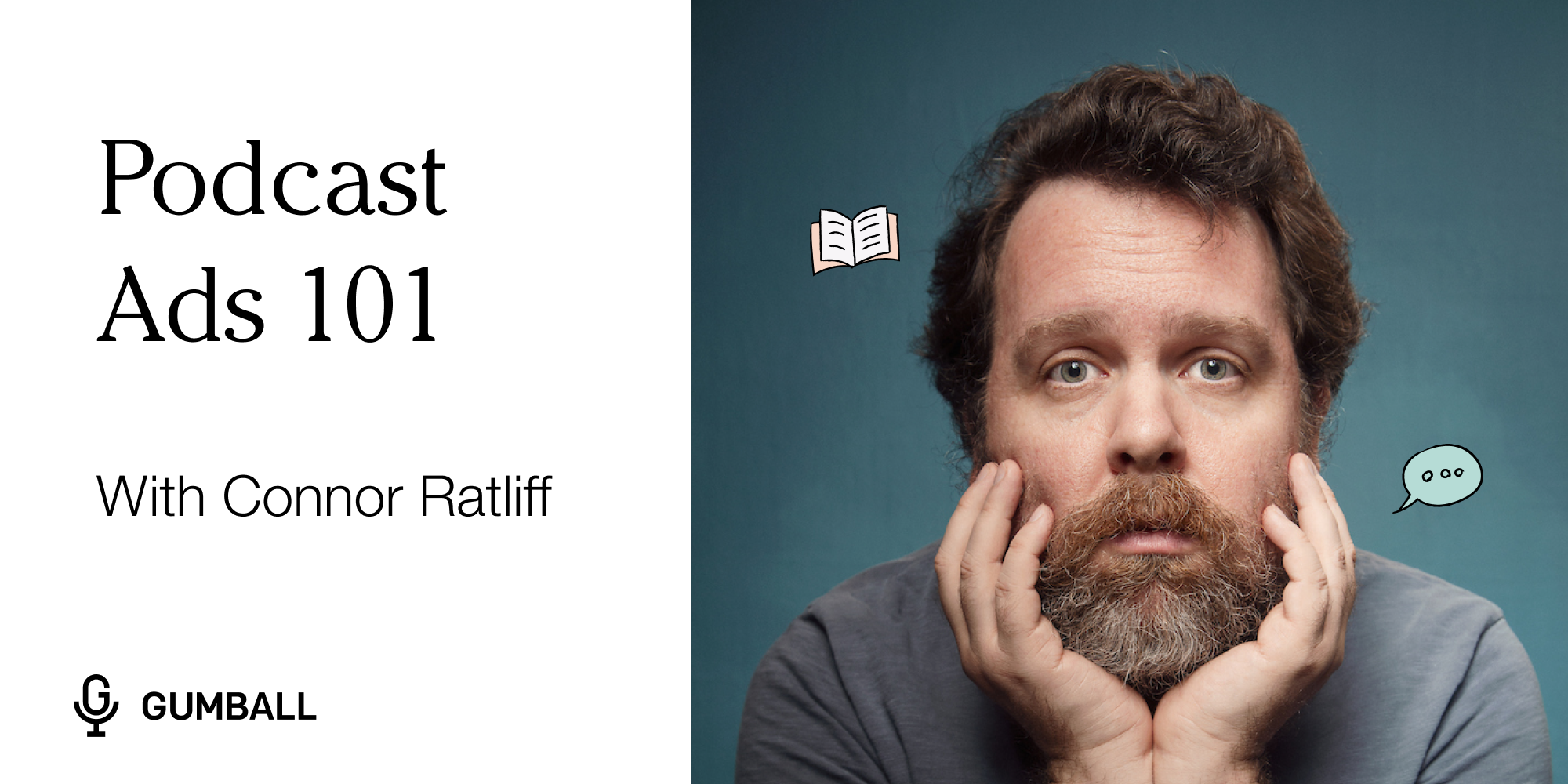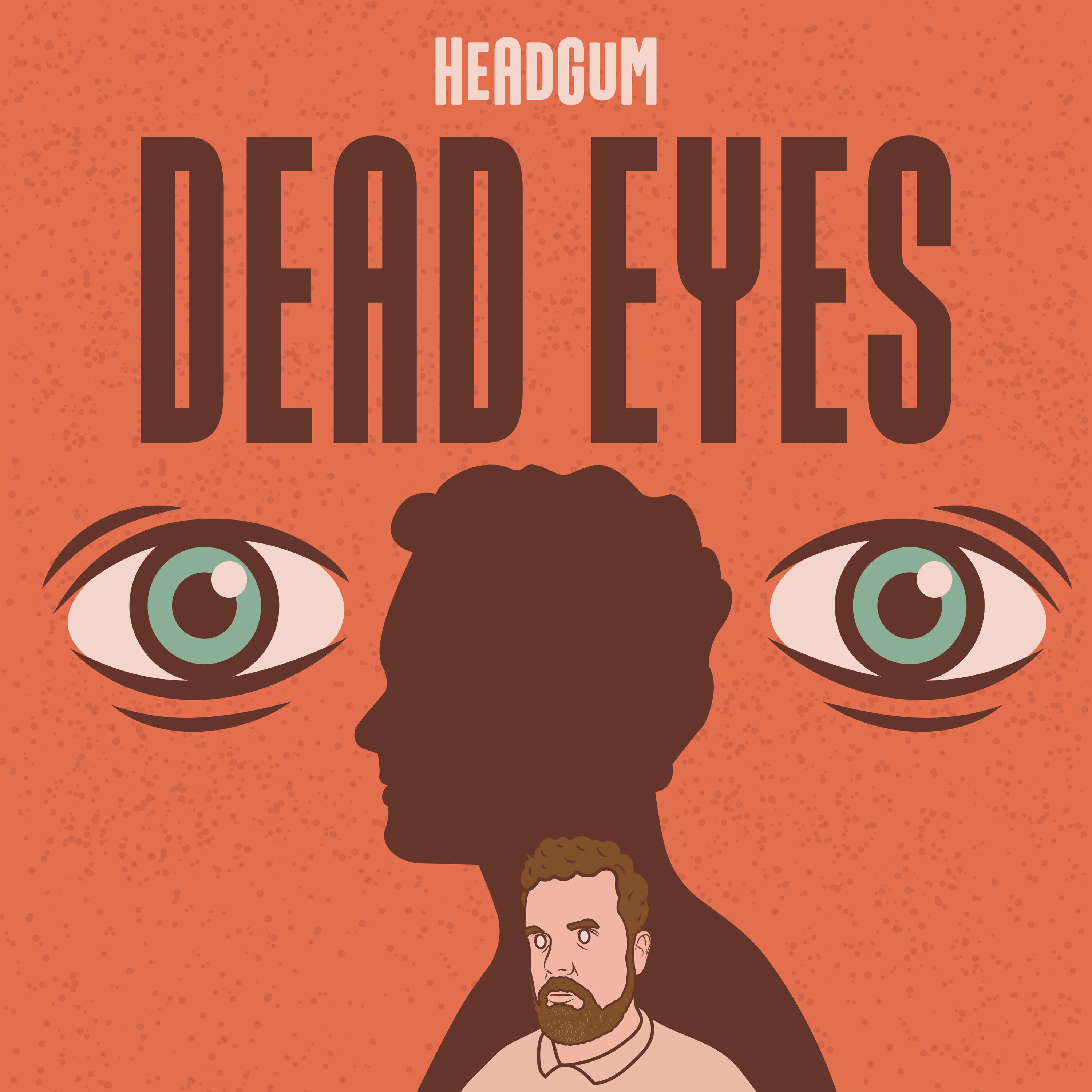Podcast Ads 101: How to Read a Great Host-Read Ad (Part II)
Get top tips for recording a memorable host-read ad from special guest and award-winning podcaster Connor Ratliff.

This article contains advice for podcasters familiar with host-read ads. If you’re a beginner new to host-read ad reads, check out Part I in this two-part series.
As a podcast host with a few host-read ads under your belt, you’ve probably developed a rhythm for taking a brand’s talking points and infusing them with your own style.
Now, though, you’ve hit a bump: you must record unique ads for the same brand over a long period of time. The advertiser obviously loves working with you (hooray!) but this long-term relationship also presents a challenge. How do you keep your reads new and fresh?
To help answer this question, we turned to the host-read ad master himself, actor and comedian Connor Ratliff. On his award-winning podcast Dead Eyes, Connor regularly impressed us with his funny, memorable, and thoughtful ad reads for brands like Manscaped, Helix Sleep, and Magic Spoon.
In Part II of “How to Read a Great Host-Read Ad,” Connor shares his advice for how to iterate on a host-read ad for the same brand.
Look for ways to connect ad reads to your podcast and extend the listening experience
In most of his ads, Connor looks for ways to incorporate Tom Hanks references. In the following read for Helix Sleep, Connor references the movie Sully and how Tom Hanks’ Sully could’ve gotten better sleep if he had a Helix mattress.

“Making everything about Tom Hanks was a way of making it feel connected to the actual listening experience of the podcast,” said Connor.
The benefits of connecting it to the content of your podcast are two-fold.
1. It keeps listeners invested in the entire experience. Because the ad read relates somehow to content they’re already interested in, they’re less likely to tune out or try to skip past the ad.
Connor says that many people have told him they kept listening because they thought the ad was a segment of the show.
2. It offers a good creative exercise. Putting parameters on your ad read style can actually make you look at the product or brand from a new and different perspective.
Don’t try to stuff every talking point into your read — that takes the interest and intrigue out of it
Brands give you many talking points so you have the ability to pick and choose the ones that resonate with you the most and spark the most curiosity within the listener, not because they expect you to say every single one.
“My recommendation to people as much as possible would be, it's better to have three or four really juicy details that'll stick with people, rather than be like, ‘Oh, and also there's this. And also there's this. Also there's this, this and this.’” Connor said.
For a host like Connor, that’s “less opportunity there's going to be for me to do the thing that makes you want to listen to the ad.”

Listeners tend to tune out when your endorsement starts to sound like a laundry list. Plus, when you’re doing multiple reads, you can simply split up the whole list into a couple talking points per read — that way, you’ll never be left empty-handed on a new read.
Stay organized
Take a systematic approach to your ad reads. Whether you’re making references or addressing specific talking points, keep track of what you’ve already said and what you haven’t.
Connor said, “If I could look at what I'd already done and keep track of it, then I could avoid repeating myself and also build a rhythm to it, so that it felt one was leading into the next.”
Scripting out your reads will also help you stay organized because you’ll have a hard copy to look back on. Further, reading from a script ensures your ad read stays tight and doesn’t meander too much.
Listen to Connor’s tips in action with his reads for the brand True Bill.
Connor recorded a total of five ads for True Bill over the course of three months. In the following three clips, he connects the content of Dead Eyes with the problem that True Bill solves: wanting to brush up on some early Tom Hanks TV appearances, he signs up for various streaming services to watch them.
But because he doesn’t need these services beyond Tom Hanks research, True Bill helps him easily keep track of and cancel his subscriptions.



Notice how in each clip he refers to a different Tom Hanks appearance and reworks both the order and the phrasing of major talking points. And although the True Bill copy script provides dozens of intro suggestions and talking points, Connor keeps the read tight and focused by choosing a core set to talk about.
To summarize…
The Gumball Recipe for Successful Long-Term Host-Read Ads:
- Find creative and engaging ways to make the ad feel integrated into your podcast
- Be selective about the number of talking points you address in each read
- Keep records of each ad script and what you’ve already talked about vs. what you haven’t
- When in doubt, think about interesting ads you’ve heard out in the wild
Need help reading and recording your host-read ad? We’re happy to help answer any questions. Reach out to us at help@gumball.fm
